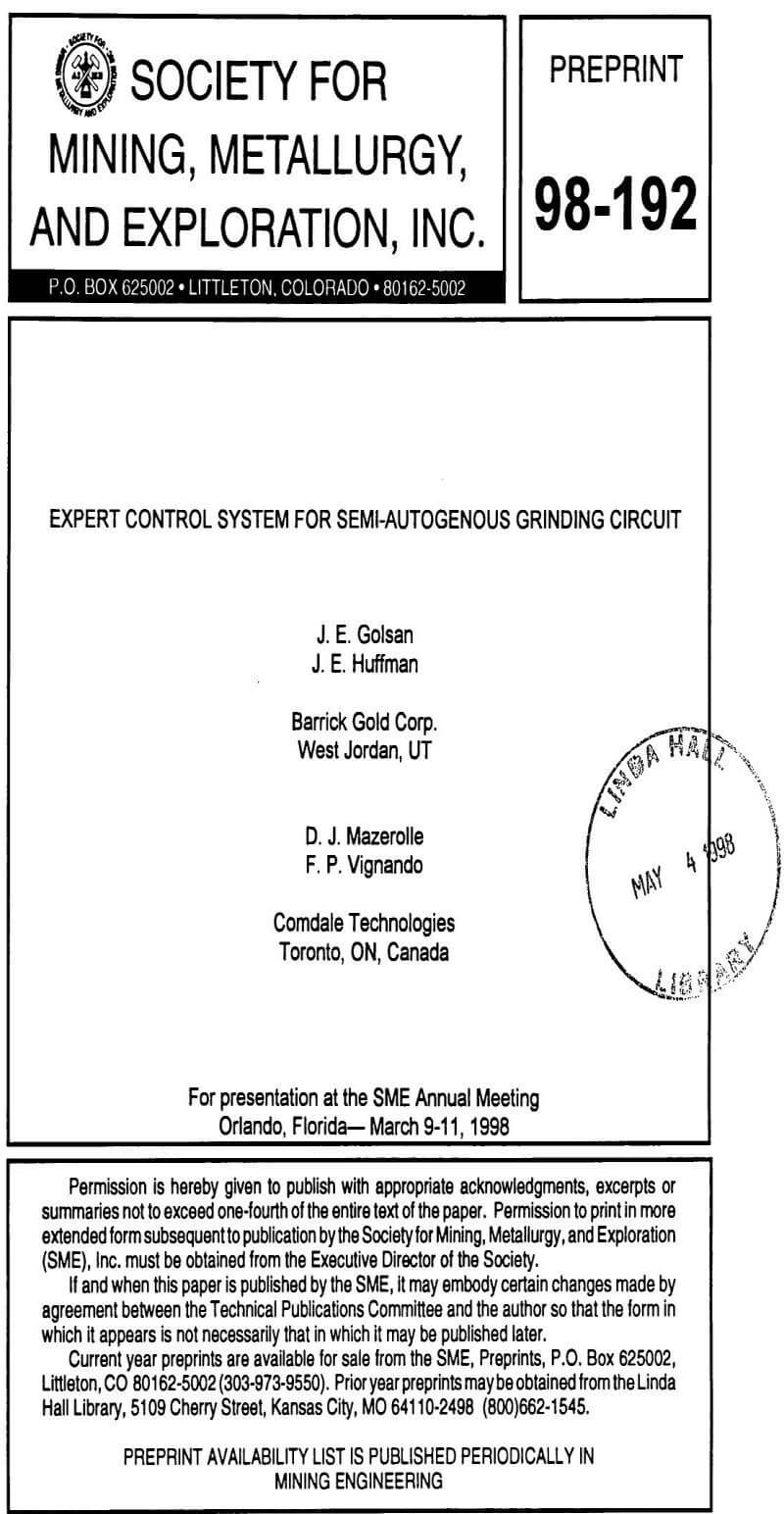The original process control interface consisted of a series of stand alone 4-20 ma controllers requiring the operators to dial in set points for the numerous processing parameters. In many cases these controls were set to their manual mode of operation with the operators making all the dynamic process changes. This procedure was very time consuming and labor intensive with results tied to operator expertise and attentiveness.
Control methodology was based on a mathematical model of the SAG mill. System development required months of ore and density sampling, an excessive amount of mill startups and shutdowns, hourly measurements of SAG mill ball charge and mill loading characteristics.
Unfortunately the mathematical model was unable to adequately compensate for the variations in ore consistency. Ultimately the computer served solely as a graphical interface for monitoring, but not controlling, the grinding process.
As the Mercur plant aged the main processing areas demanded control systems updates and in 1992 a computerized, networked, SCADA system for the three main control areas at Mercur was procured. The first FIX-DMACS SCADA system was installed in the C.I.L. area, the second in the refinery, and the third in the grinding/thickening area.
The SCADA system for the grinding area monitored SAG mill loading in order to eliminate overloading conditions. Rules in the SCADA computer adjusted the SAG feed rate downward from the operator’s set point when SAG overloading occurred. As the mill unloaded, or “ground out”, the computer then returned the feed rate to the operator set point. This implementation proved invaluable in preventing spills out of the feed end of the SAG mill and the associated, costly, down time.
At that time, the SAG feed rate was not optimized and feed rate adjustments were made, as time permitted, by the grinding control operator. Operating the grinding and thickening circuits required 72 man hours per day, three full time employees for each 12 hour shift.
The expert system had to operate continuously using very close tolerances. An absolute minimum SAG feed rate of 250 tons per hour, with an optimum feed rate of 320 TPH and a maximum feed rate of 340 TPH (dictated by feed belt capacity). Depending on the ore blend the feed belt would stall at rates as low as 345 TPH, with a feed adjustment window of only two to three minutes at the maximum feed rate.
SAG lube bearing pressure could not exceed 545 PSI, safety limits shut down the mill at 565 PSI. SAG mill power limits of 950 KW, on the low end, and 1175 KW, at the high end. Relative sound levels between 15 and 30 dB in order to minimize impact damage inside the SAG mill and avoid freewheeling (overloading).
In order to optimize the impacting process within the SAG mill, an internal mill density was calculated. The calculation included the raw ore feed rate, a sampled percent moisture content of the ore, the SAG feed water flow rate (in GPM), and a calculated recalculating load. Variations in SAG internal density below 72 percent solids and above 77 percent solids directly affected the optimum ball to ore impact within the mill.
The expert system had to maintain a consistent cyclone feed density, between 54 and 56 percent solids, in order to maximize cyclone throughput. The cyclone feed density also directly impacted the ball mill loading and the thickener underflow density (the final product of the grinding operation – the C.l.L. feed). Optimum ball mill loading was 1040 KW with a maximum power draw of 1055 KW.
